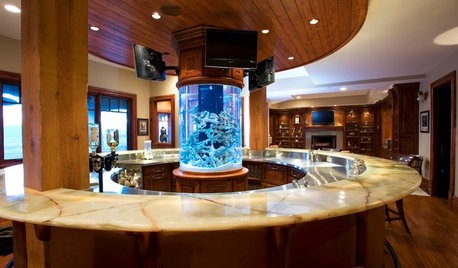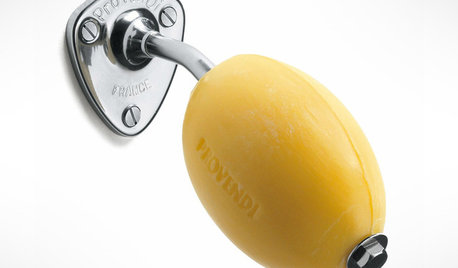I bought a used aquarium with fish: Need to be cleaned better?
rochesterroseman
18 years ago
Related Stories

DECORATING GUIDESDesigning Nemo: 30 Fish Tanks Make a Decorative Splash
Bring an otherworldly glow and a calming vibe to your home with the living art of an aquarium
Full Story
MOST POPULARThree Magic Words for a Clean Home and a Better Life
Not a natural tidying and organizing whiz? Take hope in one short phrase that can change your life forever
Full Story
LIFEYou Said It: ‘Life Is Better When the House Is Clean’ and More
Highlights from the week include great advice for a clean, organized and happy 2015
Full Story
COLORTake a Slice From Psychology to Use Orange Better
Get the scoop on this attention-seeking hue and learn how it can bring a refreshing zing to your interiors — and your spirit
Full Story
BATHROOM VANITIESBetter Places to Stash That Soap
Banish gloppy bars and flimsy pumps, and the only things you’ll need to clean are your hands
Full Story
LIGHTINGSo You Bought a Cave: 7 Ways to Open Your Home to Light
Make the most of the natural light your house does have — and learn to appreciate some shadows, too
Full Story
GARDENING GUIDESLearn the Secret to Bigger and Better Roses
Grow beautiful roses using both ordinary and unusual soil amendments
Full Story
GARDENING AND LANDSCAPINGHow to Make a Pond
You can make an outdoor fish paradise of your own, for less than you might think. But you'll need this expert design wisdom
Full Story
GARDENING AND LANDSCAPING11 Ways to Make Your Sleeping Porch Even Better
Turn off that air conditioner and tune in to the delights of slumbering in the nighttime breeze
Full Story
BATHROOM DESIGN12 Designer Tips to Make a Small Bathroom Better
Ensure your small bathroom is comfortable, not cramped, by using every inch wisely
Full StorySponsored






dobesrule
rochesterrosemanOriginal Author
Related Professionals
Rancho Palos Verdes Landscape Architects & Landscape Designers · Estelle Landscape Contractors · La Mirada Landscape Contractors · Mendota Heights Landscape Contractors · Ramsey Landscape Contractors · San Bruno Landscape Contractors · Shaker Heights Landscape Contractors · West Chester Landscape Contractors · Shenandoah Landscape Contractors · Arlington Heights Decks, Patios & Outdoor Enclosures · Bonney Lake Decks, Patios & Outdoor Enclosures · Randallstown Decks, Patios & Outdoor Enclosures · Roseville Decks, Patios & Outdoor Enclosures · Surfside Decks, Patios & Outdoor Enclosures · Towson Decks, Patios & Outdoor EnclosuresRodeoSquirrel
rochesterrosemanOriginal Author
Minaku
RodeoSquirrel
Minaku
RodeoSquirrel
woeisme
RodeoSquirrel
Minaku
woeisme
woeisme
woeisme
RodeoSquirrel